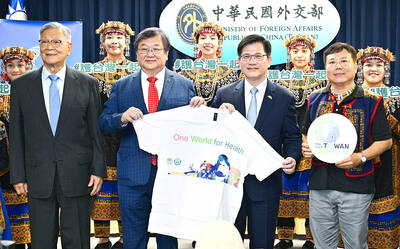Who says business should be all work and no play? Not the AES Corp, a global electricity producer. Right there in its annual report released this week, AES proclaims it has four "shared principles" that guide its operations: integrity, fairness, social responsibility and fun.
Fun? You bet. "AES desires that people employed by the company and those people with whom the company interacts have fun in their work," it proclaims. It has "structured its organization to maximize the opportunity for fun for as many people as possible."
Among those not having a great time just now are AES's shareholders. The stock price is down 45 percent this year as AES confronts a hostile capital market. It has cut back on capital spending and is trying to sell assets, but that is slow going. There are problems in Venezuela, Brazil and Argentina, which used to be its biggest profit centers. A subsidiary in Britain is in default on loans, and AES faces several lawsuits in California, where it is one of the companies blamed for soaring electricity prices in 2000.
But the most interesting part of the new annual report may deal with additional disclosures on one financing technique AES used in the good old days, when Wall Street loved it and the share price was rising. That was the issuance of what AES calls SELLs, which one might think was an investment recommendation but instead is an acronym for "secured equity-linked loans."
At the end of last year, it owed US$650 million on such loans, with US$350 million due in 2003 and the rest in 2004. The company carries them as "nonrecourse loans" on its balance sheet, figuring that it doesn't need cash to pay the loans, only stock.
And there's the rub. At Thursday's US$9 share price, AES would have to issue 72 million shares to repay the loans. That equals 13 percent of the shares already outstanding. In other words, this financing strategy could cause substantial dilution for shareholders who are already suffering. And the dilution worsens as the share price declines. At US$3.40, a level AES reached last month, it would have to issue 191 million shares, a 35 percent dilution.
AES officials did not return telephone calls on Thursday, and it is not clear when the SELLs were issued. But it appears that was while the company's stock was riding high. It peaked at US$72.81 in the fall of 2000.
The use of SELLs was a classic bull market financing technique. Who cared about the risk of falling prices? At best, a rising stock price would mean that the company could issue stock at a high price to repay the loan. In the meantime, the accounting rules allowed AES to act as if the shares did not exist when it computed earnings per share. So its profits looked better than they would have appeared if the company had simply sold stock to investors.
In that way it is reminiscent of the first great period of convertible security issuance in the 1960s, when the accounting rules allowed companies to ignore the shares that would be issued on conversion when calculating per-share profit figures.
That accounting loophole was closed. Now normal convertible securities are considered in computing per-share numbers, to the extent that the convertibles are in the money. But the shares backing these loans are ignored because it is possible that the company will pay the loans with cash.
This is not quite like Enron, which also had a lot of debt secured by a promise to issue stock. There is more disclosure here, and the AES debt is on its balance sheet. But there are similarities. If its business situation deteriorates and it faces problems in borrowing money, AES could have to issue a huge number of shares.
Sometimes a plan that looks great turns out to be no fun at all.

Nvidia Corp yesterday unveiled its new high-speed interconnect technology, NVLink Fusion, with Taiwanese application-specific IC (ASIC) designers Alchip Technologies Ltd (世芯) and MediaTek Inc (聯發科) among the first to adopt the technology to help build semi-custom artificial intelligence (AI) infrastructure for hyperscalers. Nvidia has opened its technology to outside users, as hyperscalers and cloud service providers are building their own cost-effective AI chips, or accelerators, used in AI servers by leveraging ASIC firms’ designing capabilities to reduce their dependence on Nvidia. Previously, NVLink technology was only available for Nvidia’s own AI platform. “NVLink Fusion opens Nvidia’s AI platform and rich ecosystem for

‘WORLD’S LOSS’: Taiwan’s exclusion robs the world of the benefits it could get from one of the foremost practitioners of disease prevention and public health, Minister Chiu said Taiwan should be allowed to join the World Health Assembly (WHA) as an irreplaceable contributor to global health and disease prevention efforts, Minister of Foreign Affairs Lin Chia-lung (林佳龍) said yesterday. He made the comment at a news conference in Taipei, hours before a Taiwanese delegation was to depart for Geneva, Switzerland, seeking to meet with foreign representatives for a bilateral meeting on the sidelines of the WHA, the WHO’s annual decisionmaking meeting, which would be held from Monday next week to May 27. As of yesterday, Taiwan had yet to receive an invitation. Taiwan has much to offer to the international community’s

CAUSE AND EFFECT: China’s policies prompted the US to increase its presence in the Indo-Pacific, and Beijing should consider if this outcome is in its best interests, Lai said China has been escalating its military and political pressure on Taiwan for many years, but should reflect on this strategy and think about what is really in its best interest, President William Lai (賴清德) said. Lai made the remark in a YouTube interview with Mindi World News that was broadcast on Saturday, ahead of the first anniversary of his presidential inauguration tomorrow. The US has clearly stated that China is its biggest challenge and threat, with US President Donald Trump and US Secretary of Defense Pete Hegseth repeatedly saying that the US should increase its forces in the Indo-Pacific region

ALL TOGETHER: Only by including Taiwan can the WHA fully exemplify its commitment to ‘One World for Health,’ the representative offices of eight nations in Taiwan said The representative offices in Taiwan of eight nations yesterday issued a joint statement reiterating their support for Taiwan’s meaningful engagement with the WHO and for Taipei’s participation as an observer at the World Health Assembly (WHA). The joint statement came as Taiwan has not received an invitation to this year’s WHA, which started yesterday and runs until Tuesday next week. This year’s meeting of the decisionmaking body of the WHO in Geneva, Switzerland, would be the ninth consecutive year Taiwan has been excluded. The eight offices, which reaffirmed their support for Taiwan, are the British Office Taipei, the Australian Office Taipei, the